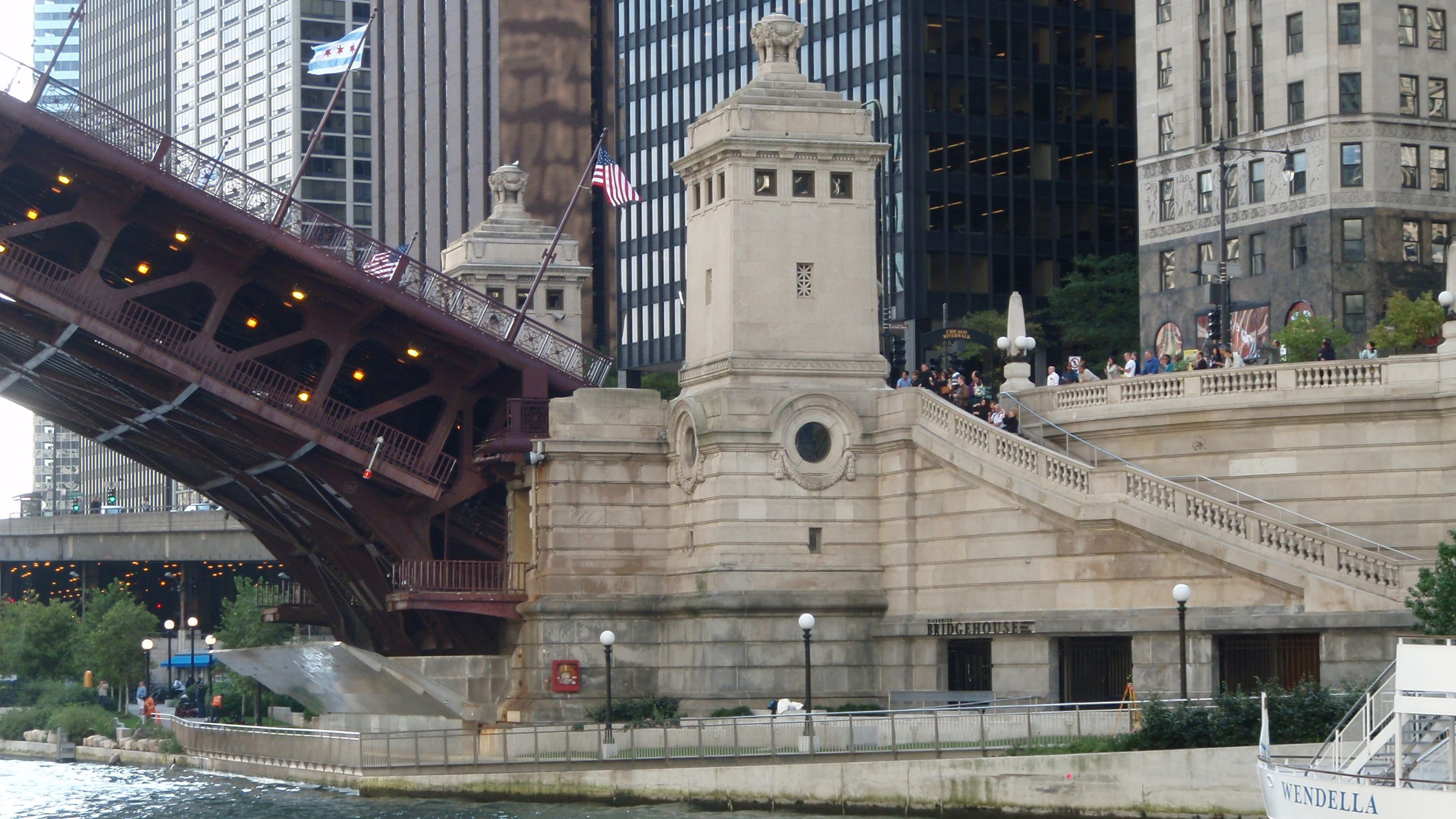
Spring boat run arrives at the Du Sable Bridge

Spring boat run arrives at the Du Sable Bridge
On October 15, 2010, the Michigan Avenue bridge was renamed the DuSable Bridge in honor of area's first non-native resident - Jean Baptiste Pointe DuSable. DuSable, the son of a French pirate and a Haitian slave, established the area's first trading post in 1779. His trading post was located near where the NE bridgehouse is today.
This bridge is considered by many to be the most spectacular of the 18 bridges. It has 4 ornate bridge tender houses. Each double-deck leaf is supported by 4 deck trusses. It is two bridges built side-by-side to allow one side to be open without blocking North Michigan Avenue off completely.
The bas relief sculptures on the south bridge tender houses commemorate the Fort Dearborn Massacre of 1812 (Fort Dearborn was located at the south end of today's bridge) and the rebuilding of the city after the Great Fire of 1871. The bas relief sculptures on the north side bridge tender houses commemorate French explorers Marquette and Joliet; and early settlers Kinzie and DuSable.
In 2006, the SW bridge tender house became home to the McCormick Bridgehouse Museum. Displays of the history of the Chicago River, as well as the ability to see the operating machinery of the bridge, and to access to all levels of the bridge tender house make this museum a must see for both the bridge enthusiast and the river enthusiast.

One of the more dramatic events at the bridge was a car chase in 1922. A safe cracker named Vincent “Skimmer” Drucci was being pursued by detectives Tuohy and Klatzco. The chase eventually came to the north approach of the bridge which was beginning to open for a passing steamer. Drucci drove through the gates and was able to jump the four foot gap between the bridge leaves and make it safely to the south side of the river only to get caught in traffic. Touy and Klatzco followed and made the dramatic jump as well capturing Drucci as he tried to flee on foot.
The most spectacular accident involving this bridge occurred on September 20, 1992. Construction work was underway to rehabilitate the bridge. The bridge deck had been removed on the southeast leaf and a 40 ton capacity crane had been parked over the counterweight. The north side leaves had just been raised to allow a sailboat to pass. As the northwest leaf was lowered into position, the southeast leaf of the bridge sprang up, catapult-like.
A sailboat owner was quoted in the September 24, 1992 Chicago Tribune saying, “The northwest section was already down or in the final stages of going down when we heard this grinding sound and saw the thing (the southeast leaf) swing to straight up and down. It took five seconds. It was going pretty fast.” Equipment and debris was launched across East Wacker Drive into buses, cars, and pedestrians. Six people on a CTA base were the only injuries noted in the reports of the incident. The rapid rotation ripped the bridge leaf from its trunnion bearings and the leaf dropped into the tail pit.
The cause of the accident was a combination of a severely unbalanced bridge leaf and partially disengaged safety locks. This condition allowed the rack and pinion to un-mesh, which allowed the leaf to rise uncontrollably. The bridge was reopened to traffic on November 25, 1992.
The Chicago Blackhawks won the Stanley Cup in June 2010. The victory parade ended at the south end of the bridge where the rally was held. The top floor of the McCormick Bridgehouse & Chicago River Museum was an excellent venue to capture the festivities. The photo below was taken as the team neared the end of the parade.

Chicago Blackhawks Stanley Cup parade as seen from the McCormick Bridgehouse & Chicago River Museum 6/11/2010